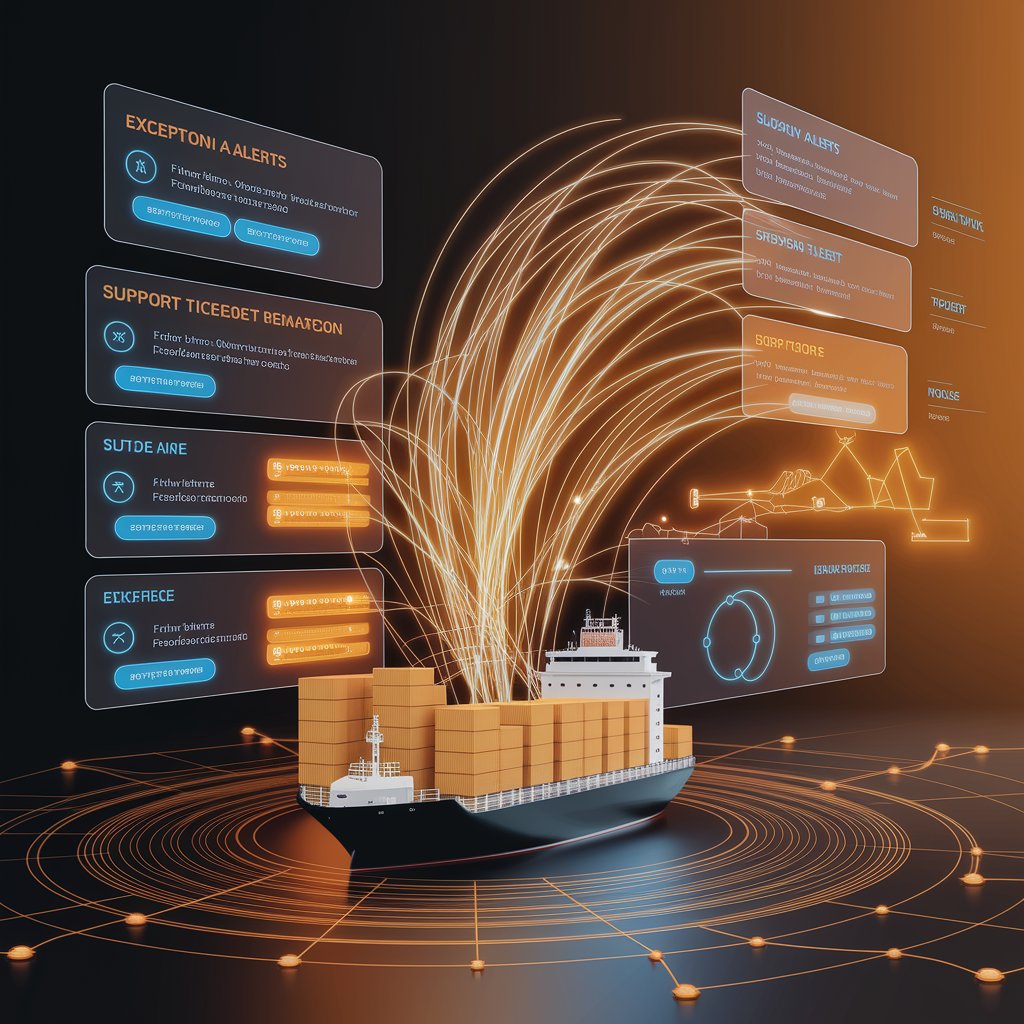How to Automate Exception Management in Logistics (SLA Automation)
In logistics, exceptions—like shipment delays, customs holds, or failed deliveries—are unavoidable. The real challenge is how quickly you detect and respond to them. Manual monitoring wastes time and often results in missed Service Level Agreements (SLAs).

Introduction
With SLA automation, exceptions can be detected instantly, tickets can be created automatically, and alerts can be sent to the right team before the customer even notices the issue.
Step 1: Map the Workflow
- Trigger: Shipment status shows delay, exception, or SLA risk.
- Detection: System flags SLA breach (e.g., delivery late by >24h).
- Action: Create a support ticket in Zendesk/Freshdesk.
- Notification: Alert ops team via Slack, Teams, or email.
- Escalation: If not resolved within set time, escalate to manager.
- Closure: Once resolved, ticket closes and customer gets update.

Step 2: Choose Your Tools
- Tracking Source: AfterShip, project44, Linbis TMS.
- Ticketing System: Zendesk, Freshdesk, HubSpot Service Hub.
- Automation: Zapier, Make, Power Automate.
- Notifications: Slack, Teams, Gmail/Outlook.
- Dashboard: Google Sheets, Power BI, or Looker.
Step 3: Build the Automation (Example in Zapier)
- Trigger: Shipment status update with “Exception” or “Delayed.”
- Connect AfterShip or Linbis to Zapier.
- Connect AfterShip or Linbis to Zapier.
- Create Ticket:
- Zapier Action → Zendesk.
- Auto-populate ticket with shipment ID, customer, and issue type.
- Zapier Action → Zendesk.
- Notify Team:
- Slack/Teams notification: “Exception detected – Shipment #12345 delayed.”
- Slack/Teams notification: “Exception detected – Shipment #12345 delayed.”
- Escalation Rule:
- If ticket open >4h → alert manager via email/Slack.
- If ticket open >4h → alert manager via email/Slack.
- Closure:
- When carrier status = “Delivered,” mark ticket as resolved.
- When carrier status = “Delivered,” mark ticket as resolved.

Step 4: Test the Workflow
- Simulate a delayed shipment.
- Verify ticket creation in Zendesk.
- Confirm Slack/Teams alert is sent.
- Ensure escalation rule triggers after set time.
Step 5: Optimize
- Add customer auto-emails: notify them proactively of delay.
- Tag exceptions by root cause (customs, weather, carrier).
- Use analytics to track SLA performance and carrier reliability.

Benefits of Exception Management Automation 📈
- Faster Resolution: Teams react before SLA is breached.
- Customer Trust: Proactive updates show professionalism.
- Efficiency: Reduce manual monitoring workload.
- Data Insights: Identify recurring issues by carrier or lane.
- Resilience: Escalations ensure no shipment goes unnoticed.
Conclusion
Automating exception management with SLA tracking ensures that no delay slips through the cracks. By connecting carrier updates to ticketing systems and notifications, logistics teams can act faster, improve customer satisfaction, and hold carriers accountable.
With platforms like AfterShip, Linbis, Zapier, and Zendesk, this automation delivers both speed and reliability.
